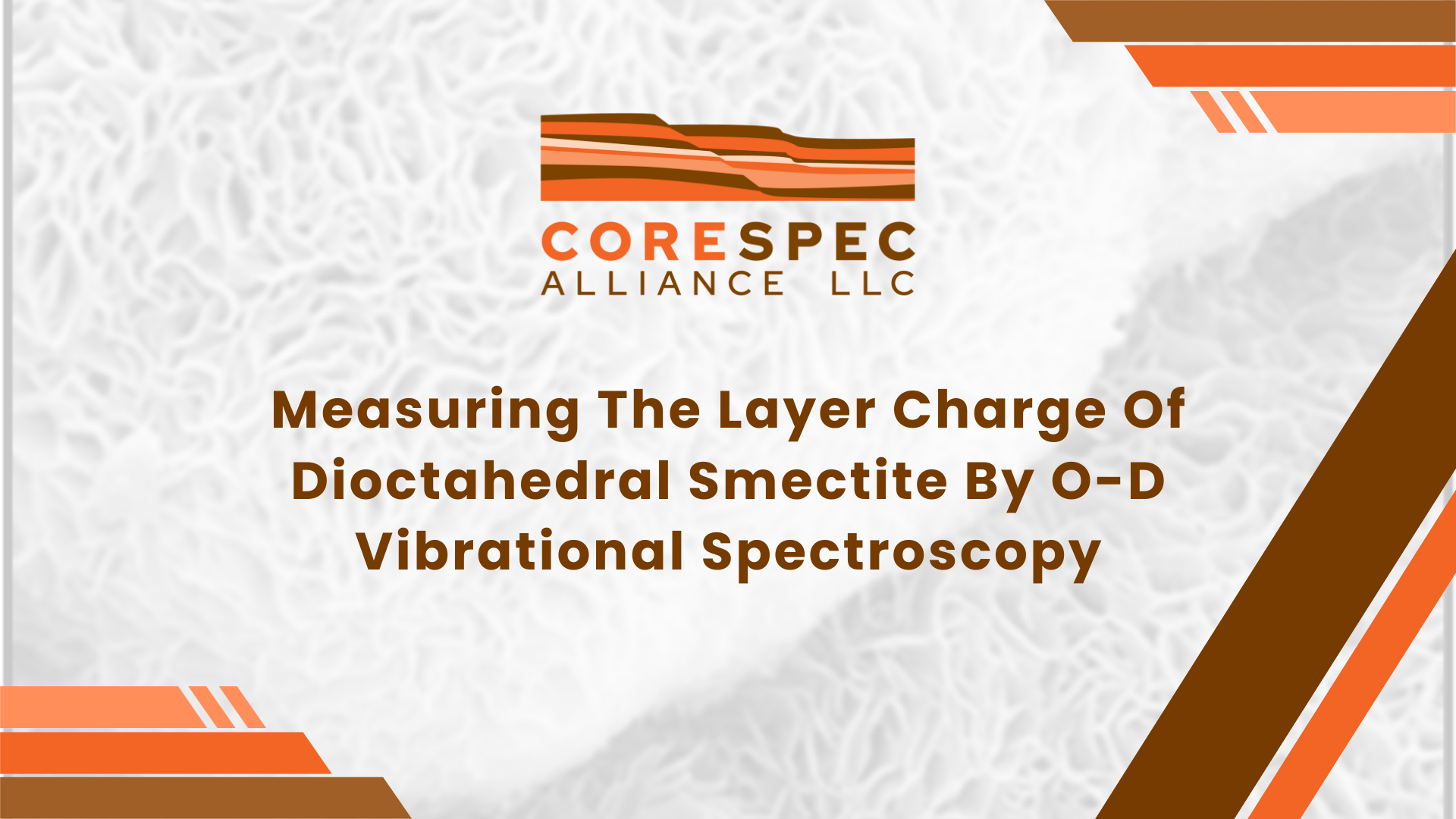MEASURING THE LAYER CHARGE OF DIOCTAHEDRAL SMECTITE BY O-D VIBRATIONAL SPECTROSCOPY
ARTUR KULIGIEWICZ1 , ARKADIUSZ DERKOWSKI1,*, KATJA EMMERICH2, GEORGE E. CHRISTIDIS3, CONSTANTINOS TSIANTOS4 , VASSILIS GIONIS4 , AND GEORGIOS D. CHRYSSIKOS4 ,* 1 Institute of Geological Sciences, Polish Academy of Sciences, ul. Senacka 1, 31-002 Krakow, Poland 2 Competence Center for Material Moisture (CMM) and Institute of Functional Interfaces (IFG), Karlsruhe Institute of Technology, Hermann-von-Helmholtz-Platz 1, D-76344 Eggenstein-Leopoldshafen, Germany 3 School of Mineral Resources Engineering, Technical University of Crete, Chania, Greece 73100 4 Theoretical and Physical Chemistry Institute, National Hellenic Research Foundation, 48 Vass. Constantinou Ave., Athens, Greece 11635
Abstract: Layer charge (LC) is a fundamental property of smectite but its measurement remains
challenging and tedious to apply on a high-throughput basis. The present study demonstrates that the
position of a sharp, high-energy O-D stretching band of adsorbed D2O (vO-D, at ~2686-2700 cm-1 ),
determined by infrared spectroscopy, correlates with LC and provides a simple method for its
measurement. Twenty nine natural dioctahedral smectites and 14 reduced-charge montmorillonites with
LC determined previously by different methodologies were saturated with D2O and examined by
attenuated total reflectance infrared spectroscopy (ATR-IR). The samples included smectites in Mg, Ca,
Na, Li, K, and Cs forms and covered the full range of the smectite LC (0.2 to 0.6 e per formula unit).
Statistically significant correlations were found between nOD and LC values determined with each of the
two main methods of LC determination: the structural formula method (R2 = 0.96, s = 0.02, ~0.2 < LC <
0.6) and the alkylammonium method (R2 = 0.92, s = 0.01, 0.27 < LC < 0.37). These correlations were
based on Li- and Na-saturated smectites, respectively, but other cationic forms can be employed provided
that the exchangeable cations are of sufficiently high hydration enthalpy (e.g. Mg2+ or Ca2+, but not K+ or
Cs+ ). The new method is fast, low-cost, implemented easily in laboratories equipped with ATR-FTIR, and
applicable to samples as small as ~5 mg.
Key Words—ATR, D2O, Infrared Spectroscopy, Layer Charge, Smectite


No Comments